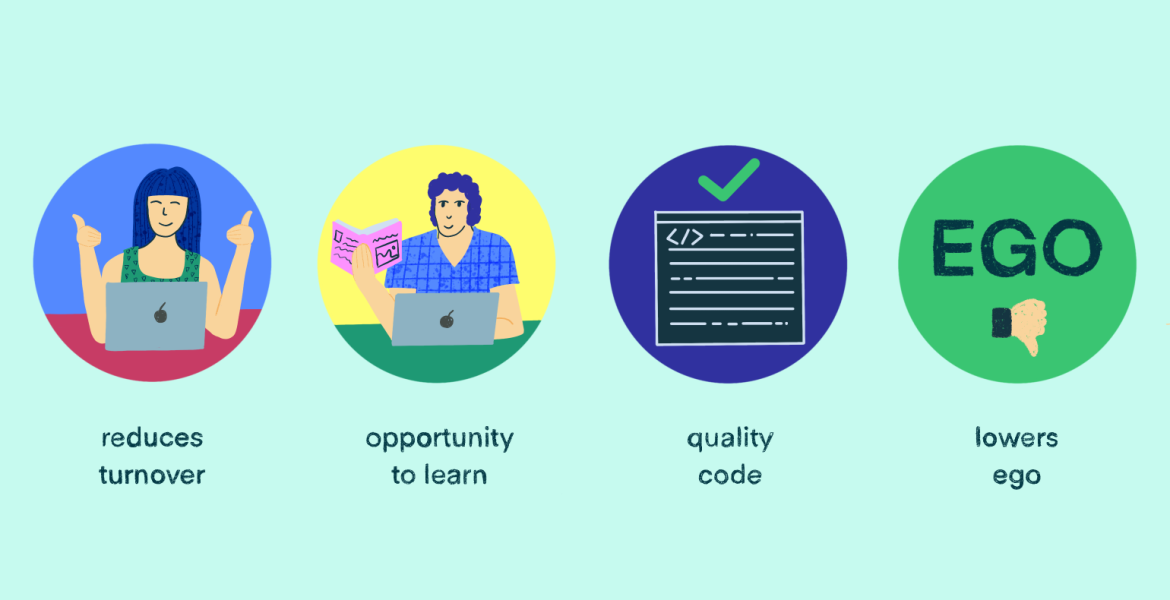What to consider when rotating developers in IT projects
At Trinidad Wiseman, we prioritize building long-term partnerships with our clients. While this approach strengthens business relationships, working on the same project for years can sometimes lead to monotony for developers. When the technical challenges become routine, motivation can naturally begin to wane.
This is where thoughtful developer rotation becomes valuable. By rotation, we mean the structured process of moving team members from one project to another. Like a well-timed substitution in a sports match, the right rotation at the right time can bring new energy and perspectives while maintaining overall team performance.
The benefits of developer rotation
Developer rotation is not merely an operational change but a strategic move that brings several important benefits.
It reduces employee turnover.
Developers are naturally curious professionals. When they've mastered a project and find fewer opportunities to grow, they may begin looking elsewhere. Two primary factors contribute to this:
- Desire for technical growth: Developers want to explore new technologies and frameworks, not just maintain the same codebase indefinitely. Learning opportunities are a strong motivator for talented professionals.
- Interest in diverse domains: After years of developing solutions for one sector, like banking, creating applications for healthcare or agriculture offers stimulating new challenges. Different industries present unique problems that spark creativity and engagement.
It enhances learning and professional development.
Developers can become stagnant when working on the same project for extended periods. While Trinidad Wiseman's various in-house workshops and trainings are beneficial, working on different projects offers invaluable hands-on experience that accelerates growth. This exposure to a wider range of projects expands developers' skill sets and makes them more adaptable.
It improves code quality through fresh perspectives.
We all develop routine ways of addressing problems. When you've worked with the same codebase for years, certain quirks or inefficiencies may become invisible to you. Each time a new team member joins a project, they bring fresh questions about existing implementations: "Why is this approach used here?"
These inquiries often lead to incremental improvements that enhance the overall quality of the product. A fresh perspective can identify opportunities that those too close to the code might miss.
It reduces code territoriality and manages ego.
Developer attachment to their code is natural, but it can sometimes get in the way of teamwork and the shared ownership that leads to the best solutions. Rotating developers can help by shifting the focus from individual work to the overall project goals, preventing territoriality and ego.
The challenges to consider
Every coin has two sides – and so does rotation. Therefore, it’s important to consider the following aspects.
Maintaining team cohesion.
High-performing development teams function like professional sports teams. Everyone understands their role, communicates effectively, and works toward a common goal. This level of coordination takes time to develop. When introducing someone new to an established team, there's inevitably an adjustment period.
The team's rhythm may temporarily slow as the new member gets oriented. You might hear comparisons to previous team members while the new developer is still finding their place.
To help maintain team cohesion during transitions:
- Implement structured onboarding with mentorship from experienced team members (read more about it in our other blog post).
- Ensure adequate overlap between departing and arriving developers.
- Document not just technical specifications, but also team workflows and communication patterns (this is sadly often overlooked and leads to initial difficulties in communication).
Preserving knowledge continuity.
One of the significant challenges in rotation is ensuring important knowledge transfers effectively. Technical understanding of system architecture, business domain insights, and the history behind key decisions can be difficult to communicate fully.
Some effective knowledge retention approaches include:
- Maintaining comprehensive, accessible documentation.
- Scheduling pair programming sessions during transition periods (these can range from formal code reviews to simply working side-by-side on related components).
- Recording the reasoning behind important technical decisions.
Managing client expectations.
Clients develop trust in their development teams over time. They become familiar with specific team members and may express concern when composition changes are announced.
Successfully managing these transitions requires:
- Open communication about the benefits rotation brings to their project.
- Proper introduction of new team members (try to make them feel welcome).
- Assurance of continuity and quality through careful handover processes.
Choosing the right timing.
Timing is crucial for successful rotation. There are periods when rotation is not advisable — for example, immediately before major releases, during significant architecture changes, at the client’s peak business periods, or in the early stages of a project. The optimal time for rotation is usually after the completion of a major functionality or milestone, when the project is in a relatively stable state and well documented.
Conclusion: rotation as a strategic tool.
Developer rotation should be viewed as a strategic practice rather than a reactive solution. When implemented thoughtfully, it becomes an effective approach for promoting professional growth, distributing knowledge, and maintaining team engagement.
At Triniad Wiseman, we've found that rotating entire teams to new projects when possible often yields the best results. This preserves established team dynamics while providing fresh challenges. Naturally, this works best when the previous project has reached completion or a stable maintenance phase.
Remember that rotation is not a universal solution for all situations. It's one approach among many for keeping our development work effective and our teams engaged. When used wisely, it benefits our developers, our clients, and the quality of our work. We're always refining our approach to team management at Trinidad Wiseman, drawing on our experiences to deliver the best possible outcomes for both our team members and clients.
If you want to learn more about Trinidad Wiseman's approach to software development, explore our website and completed projects. Contact us to discuss your project and find the best solution.








